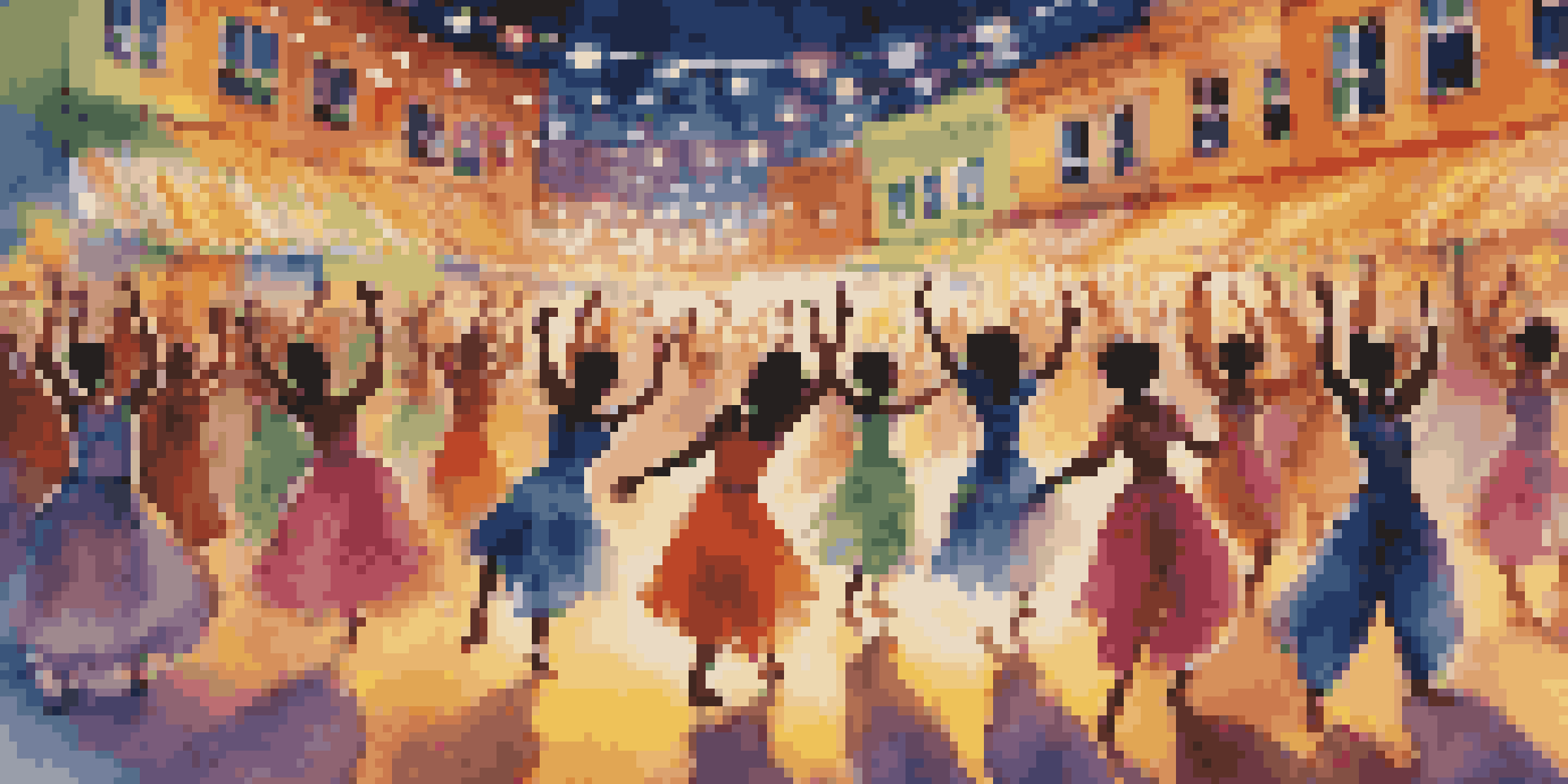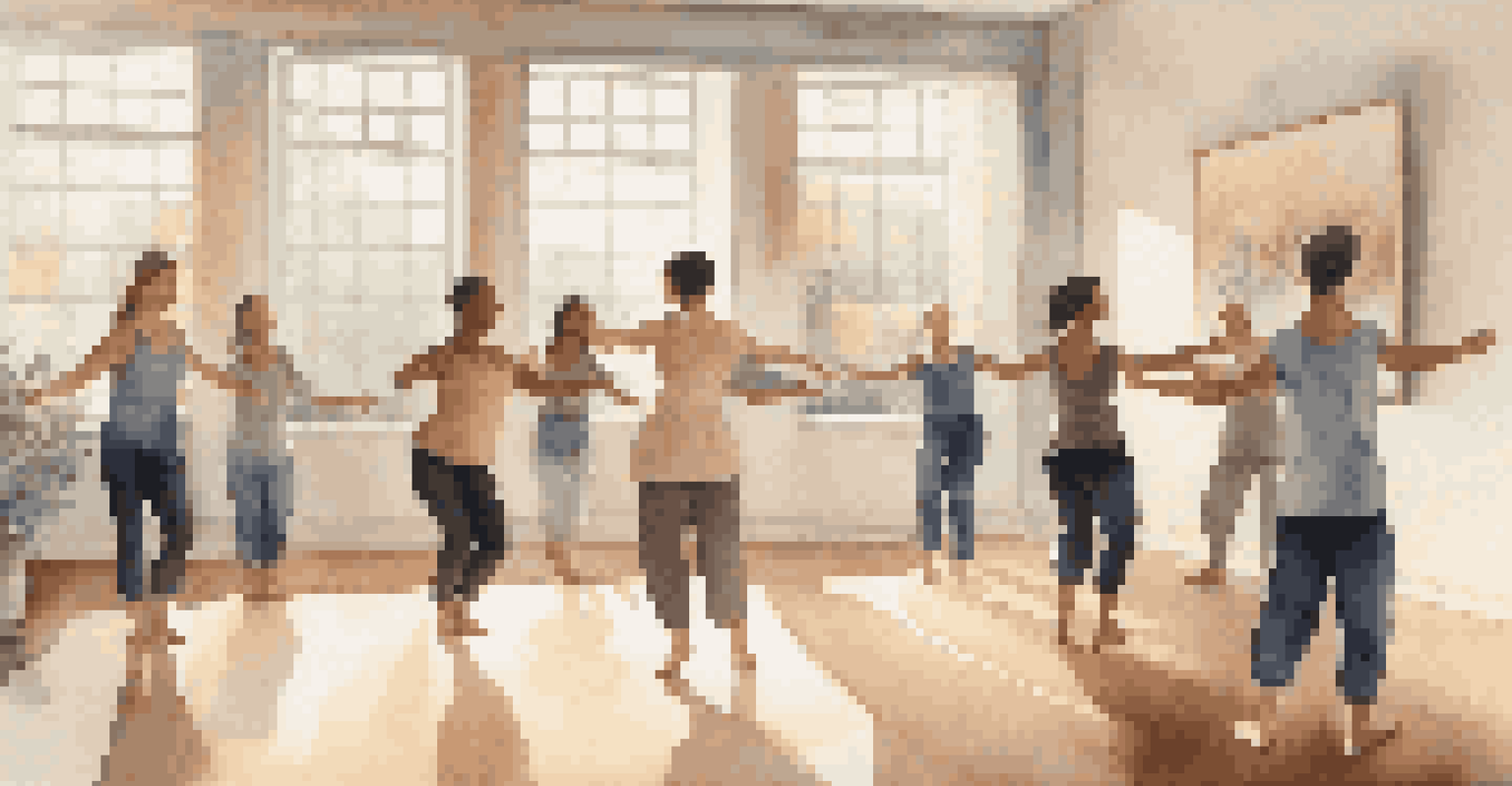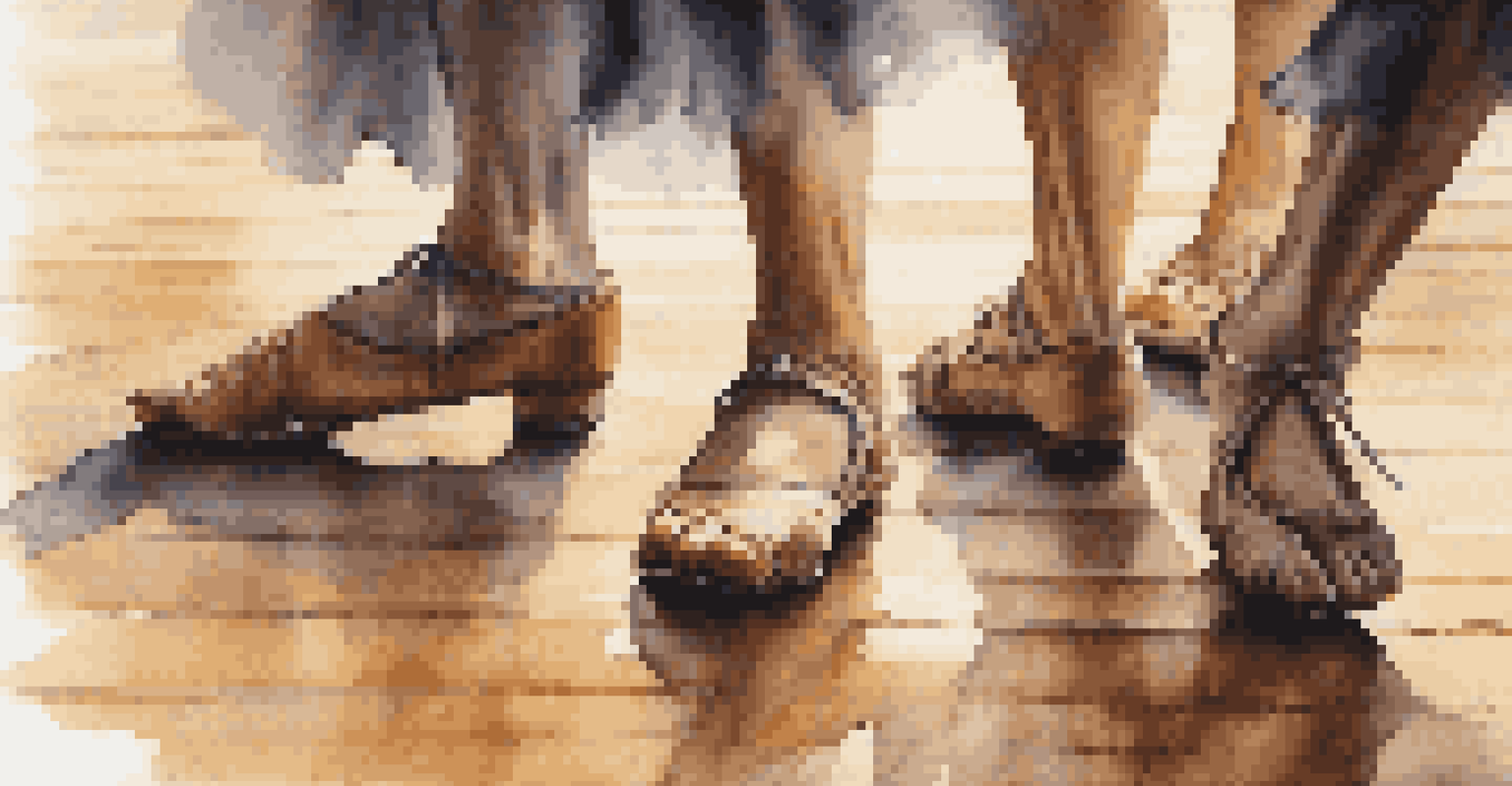Using Dance to Raise Awareness for Mental Health Issues

The Connection Between Dance and Mental Health
Dance isn't just a form of art; it's a powerful medium for expression. Many people find that moving to music allows them to express emotions they struggle to articulate. This connection between physical movement and emotional well-being can be a vital lifeline for those facing mental health challenges.
Dance is the hidden language of the soul.
Research has shown that engaging in dance can reduce symptoms of anxiety and depression. When we dance, our brains release endorphins, often referred to as 'feel-good' hormones. This natural high can create a sense of relief and joy, making dance an effective tool for mental health support.
Additionally, dance promotes mindfulness. When we focus on the rhythm and movements, we often let go of our worries, even if just for a moment. This practice of being present can be beneficial for anyone, especially those dealing with mental health issues.
Community Dance Programs: Building Support Networks
Community dance programs play a crucial role in raising awareness about mental health. These initiatives bring people together, fostering a sense of belonging and support. When individuals share their stories through dance, it helps to destigmatize mental health issues and encourages open conversations.

For instance, organizations like Dance Movement Therapy leverage dance to help individuals express their feelings and experiences. Participants can connect with others who face similar struggles, creating a supportive community that nurtures healing.
Dance Boosts Mental Well-Being
Engaging in dance releases endorphins and promotes mindfulness, helping to alleviate symptoms of anxiety and depression.
By participating in these programs, individuals not only improve their mental health but also inspire others. This ripple effect can lead to increased awareness and understanding within a community, making mental health a shared priority.
Dance as a Form of Expression for Mental Health
Dance allows individuals to express complex emotions that may be difficult to verbalize. For many, it serves as a release valve for pent-up feelings, providing an outlet for sadness, anger, or joy. This form of non-verbal communication can be particularly beneficial for those who struggle to articulate their mental health experiences.
The body says what words cannot.
For example, choreographers often create pieces that reflect personal struggles with mental health, connecting with audiences on a deeper level. When viewers witness these performances, they can empathize and feel less alone in their own experiences, fostering a sense of community and understanding.
Moreover, creating and sharing dance can empower individuals to reclaim their narratives. It transforms their experiences into art, allowing them to take control of their story and inspire others to do the same.
Dance Challenges and Fundraising Events
Dance challenges have become a popular way to raise awareness and funds for mental health initiatives. Social media platforms are buzzing with various dance challenges aimed at getting people moving while also supporting a cause. These challenges can create a sense of community and engagement, encouraging participants to share their experiences.
For instance, challenges like 'Dance for Mental Health' encourage participants to share videos while promoting fundraising efforts for mental health organizations. This not only raises crucial funds but also spreads awareness about mental health issues in a fun and engaging manner.
Community Dance Fosters Support
Community dance programs create a sense of belonging and encourage open conversations about mental health, reducing stigma.
By participating in these events, dancers not only showcase their talent but also contribute to a larger conversation about mental health, making it a vibrant and impactful way to support the cause.
The Role of Social Media in Dance and Mental Health
Social media platforms have revolutionized how we connect and share experiences, especially in the realm of dance. Dancers can reach broad audiences, sharing their stories and raising awareness about mental health issues through their performances. This accessibility has created a supportive online community where individuals can find solace and understanding.
Many dancers use their platforms to highlight their mental health journeys, breaking down the stigma surrounding these topics. By sharing their struggles and triumphs, they inspire others to seek help and find comfort in the shared experience of dance.
Furthermore, social media challenges and campaigns can rapidly gain traction, creating a global movement for mental health awareness through dance. This interconnectedness turns individual stories into a collective narrative that resonates with many.
Incorporating Dance into Mental Health Therapy
Dance therapy is an established form of expressive therapy that uses movement to help individuals address emotional, cognitive, and social issues. By incorporating dance into therapeutic settings, clients can explore their feelings in a non-threatening environment. This approach often leads to breakthroughs that traditional talk therapy may not achieve.
In dance therapy, the focus is on the process of movement rather than the end result. This shift encourages individuals to connect with their bodies and emotions, fostering self-awareness and healing. Therapists can guide clients to express their feelings through movement, helping them to release tension and anxiety.
Dance as Healing Expression
Dance serves as a powerful form of non-verbal communication, allowing individuals to express complex emotions and reclaim their narratives.
Moreover, dance therapy can be particularly effective for those who may have difficulty discussing their feelings verbally. It provides an alternative means of communication that can lead to profound insights and emotional release.
Celebrating Dance Festivals for Mental Health Awareness
Dance festivals are another vibrant way to raise awareness for mental health issues. These events often feature performances, workshops, and discussions that spotlight the connection between dance and mental health. By bringing together diverse groups of people, festivals create an inclusive atmosphere that encourages dialogue and community building.
For example, festivals may include panels where professionals discuss mental health topics alongside dance performances that represent various experiences. This blend of art and education fosters understanding and promotes a culture of support and acceptance.

Moreover, participating in or attending these festivals can be a powerful reminder of the importance of mental health awareness. They offer attendees the chance to experience the joy of dance while also engaging with critical conversations about mental health.